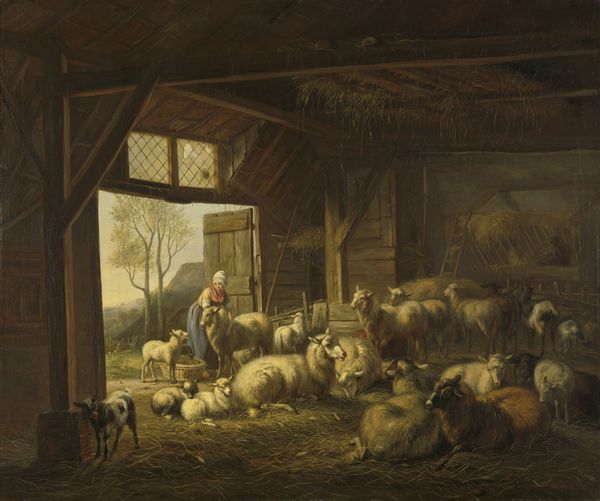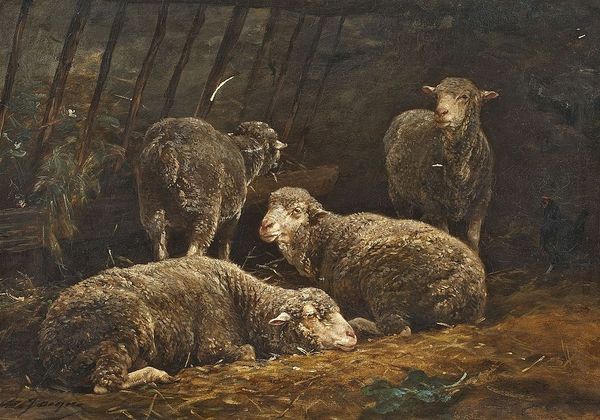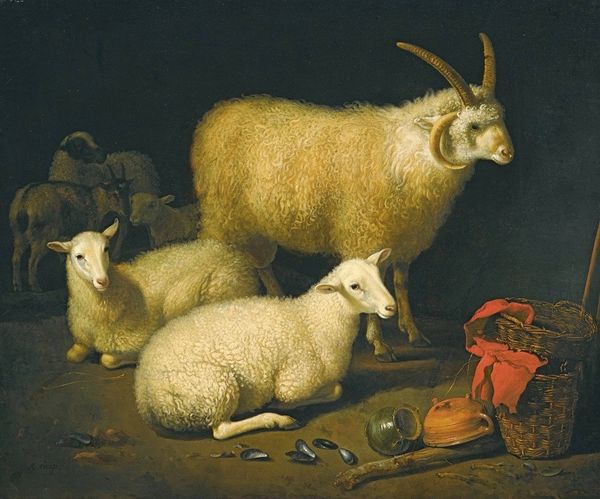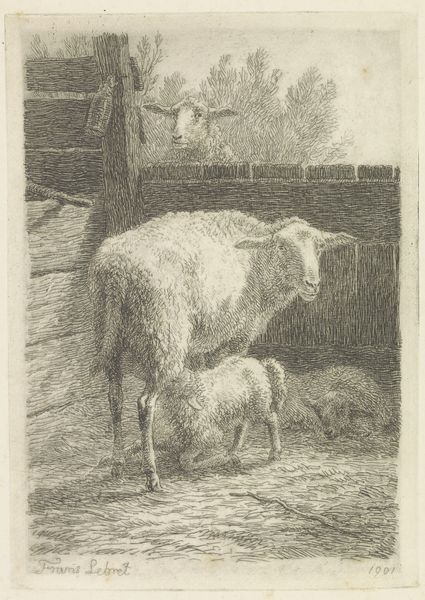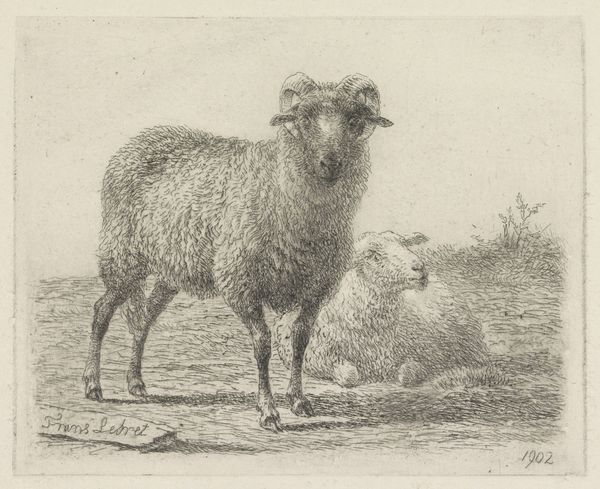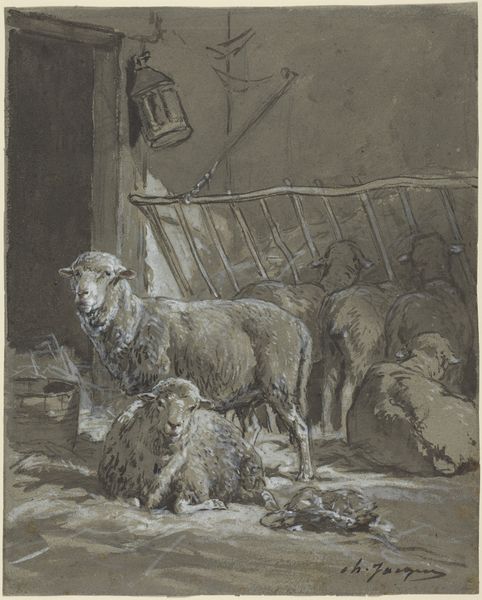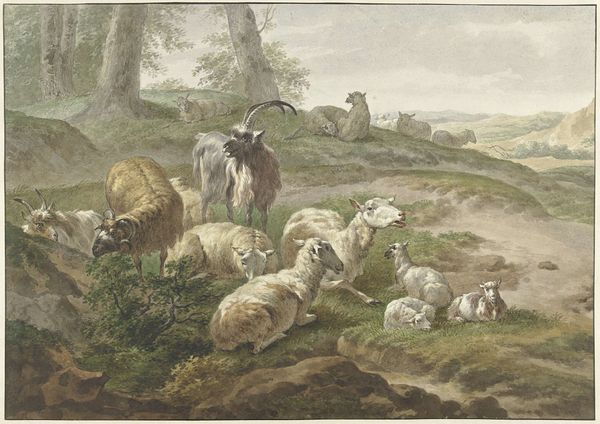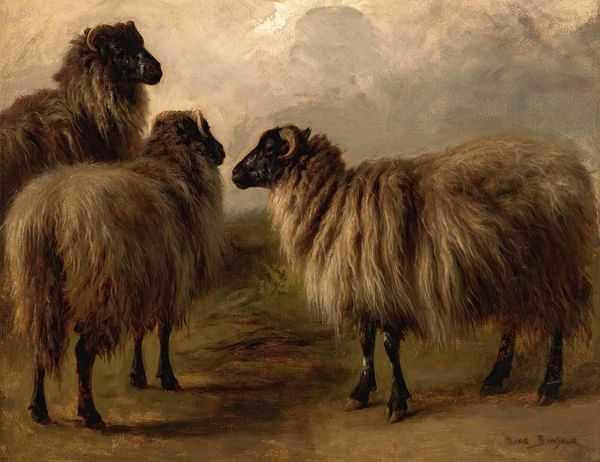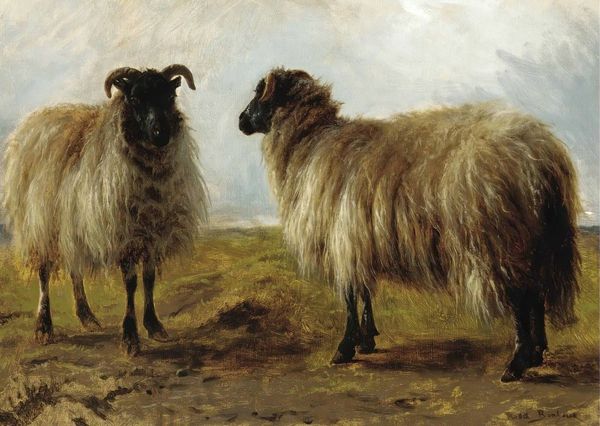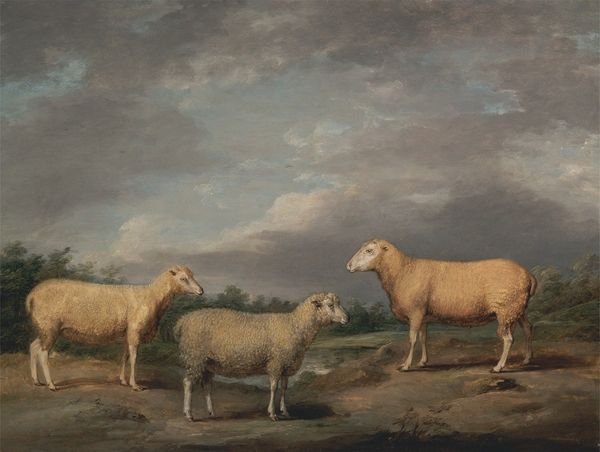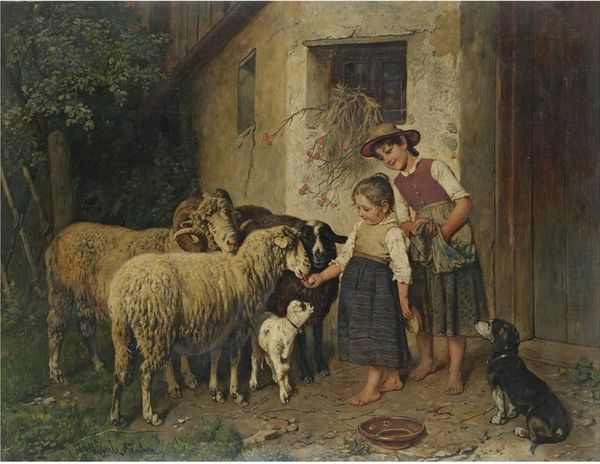
oil-paint
#
oil-paint
#
landscape
#
oil painting
#
romanticism
#
genre-painting
#
realism
Copyright: Public Domain: Artvee
Curator: James Ward painted this scene, entitled "Heath Ewe and Lambs," around 1810. The oil paint application lends an almost golden tone to the sheep nestled inside what seems to be an aging barn structure. Editor: It’s a very tactile painting; you can almost feel the roughness of the sheep's wool and the weathered wood of the barn. The earth tones are beautiful, very grounding and connected to manual labor. Curator: Precisely! Ward was painting during a time when Romanticism valued rural life and nature, and artists found ways to portray livestock with increasing nobility. I'm particularly intrigued by how this era elevated genre painting to meet the cultural needs of an increasingly industrializing society, almost mythologizing agricultural existence. Editor: Look at the construction of that barn though – that decaying post-and-beam. There's real labor and time represented by that structure, as well as some resourcefulness given that upright, angled support made from two asymmetrically hewn posts. I'm also thinking about how Ward prepped his canvas, the type of brushes he used to get that kind of texture. Curator: Absolutely, the texture draws your attention right to those animals in the dimly lit shelter. The image resonates due to its combination of realism and a touch of idealism. We see rural subjects framed by themes around the beauty and peace that Romanticism often depicts within the natural world, yet Ward is not shying away from an aging barn. Editor: He captures how labor and resources shape our interaction with the environment, which is critical. Consider how these very materials—wool from the sheep, wood from the barn— are commodified within early 19th-century economies. Curator: True; it reminds us that beyond pastoral ideals, this imagery carries economic significance relating back to rural and national stability. Editor: It’s fascinating to reflect how an artwork can hold both an idealized version of nature, and these quieter testaments of working life and the exploitation of those rural resources. Curator: Yes, Ward is playing to the sensibilities of his patrons who very likely were far removed from rural existence. It prompts interesting thoughts about who decides what constitutes "art" versus mere utility, especially as we explore the political significance embedded within idealized visions. Editor: I come away pondering on how Ward's choices -- brushstrokes, compositions, subject matter -- influence not just our perspective, but also our understanding of materiality.
Comments
No comments
Be the first to comment and join the conversation on the ultimate creative platform.
